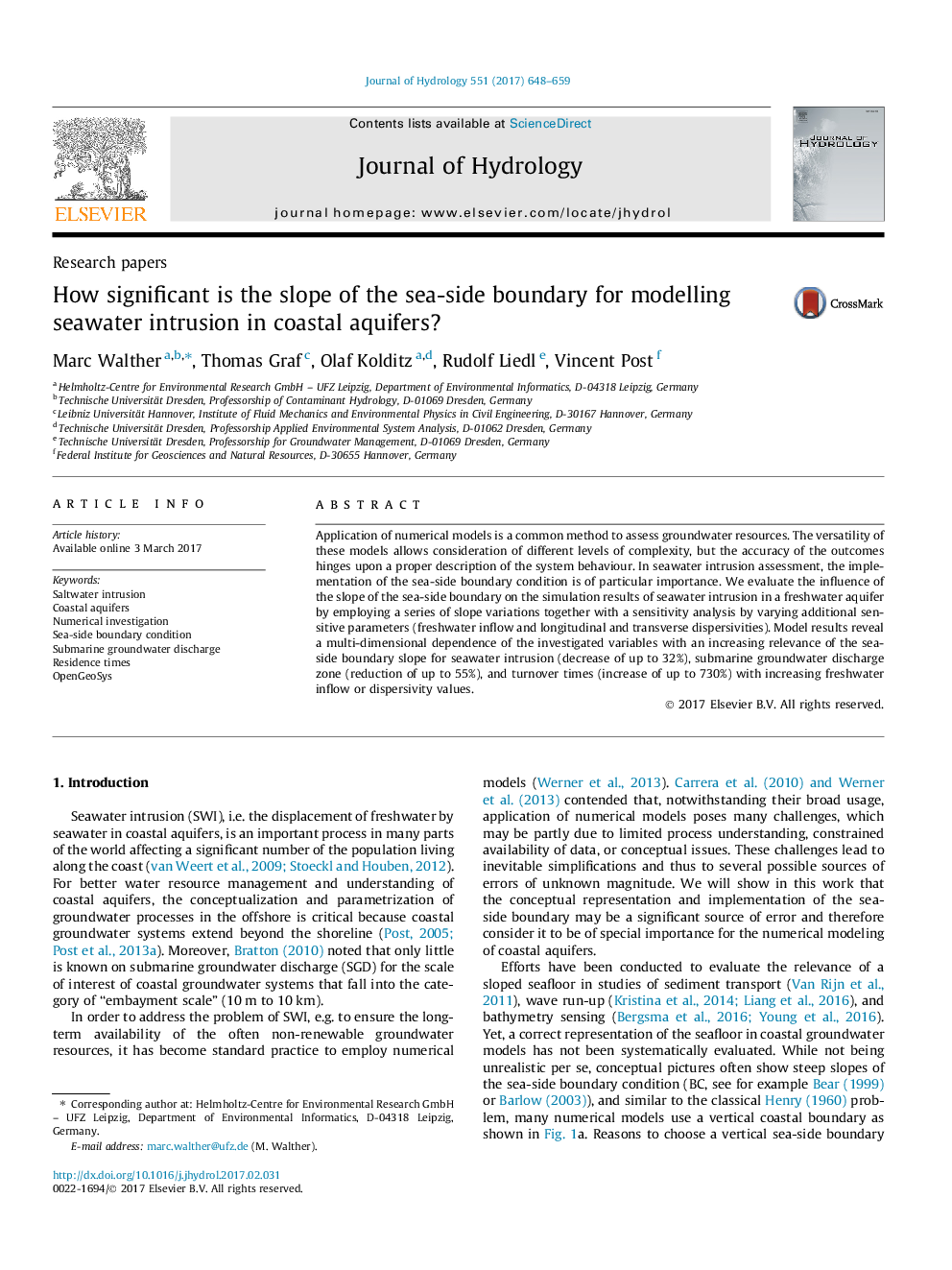| Article ID | Journal | Published Year | Pages | File Type |
|---|---|---|---|---|
| 5770866 | Journal of Hydrology | 2017 | 12 Pages |
â¢Sea-side boundary slope has relevance for transition zone, SGD, and residence times.â¢Increasing slope of sea-side boundary causes seaward shift of transition zone.â¢Stronger relevance of slope for increasing freshwater discharge or dispersivity.
Application of numerical models is a common method to assess groundwater resources. The versatility of these models allows consideration of different levels of complexity, but the accuracy of the outcomes hinges upon a proper description of the system behaviour. In seawater intrusion assessment, the implementation of the sea-side boundary condition is of particular importance. We evaluate the influence of the slope of the sea-side boundary on the simulation results of seawater intrusion in a freshwater aquifer by employing a series of slope variations together with a sensitivity analysis by varying additional sensitive parameters (freshwater inflow and longitudinal and transverse dispersivities). Model results reveal a multi-dimensional dependence of the investigated variables with an increasing relevance of the sea-side boundary slope for seawater intrusion (decrease of up to 32%), submarine groundwater discharge zone (reduction of up to 55%), and turnover times (increase of up to 730%) with increasing freshwater inflow or dispersivity values.
